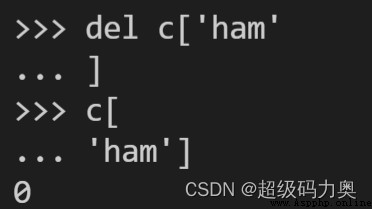包:collections
collections在python官方文檔中的解釋是High-performance container datatypes,直接的中文翻譯解釋高性能容量數據類型。
其中Counter中文意思是計數器,也就是我們常用於統計的一種數據類型,在使用Counter之後可以讓我們的代碼更加簡單易讀。
#統計詞頻
colors = ['red', 'blue', 'red', 'green', 'blue', 'blue']
result = {
}
for color in colors:
if result.get(color)==None:
result[color]=1
else:
result[color]+=1
print (result)
#{'red': 2, 'blue': 3, 'green': 1}
用Counter實現:
from collections import Counter
colors = ['red', 'blue', 'red', 'green', 'blue', 'blue']
c = Counter(colors)
print (dict(c))
傳進去可迭代對象:


傳進去列表:
刪除元素

獲得所有元素:
查看最常見出現的k個元素:
Counter('abracadabra').most_common(3)
#[('a', 5), ('r', 2), ('b', 2)]
Counter更新:
c = Counter(a=3, b=1)
d = Counter(a=1, b=2)
c + d # 相加
#Counter({'a': 4, 'b': 3})
c - d # 相減,如果小於等於0,刪去
#Counter({'a': 2})
c & d # 求最小
#Counter({'a': 1, 'b': 1})
c | d # 求最大
#Counter({'a': 3, 'b': 2})